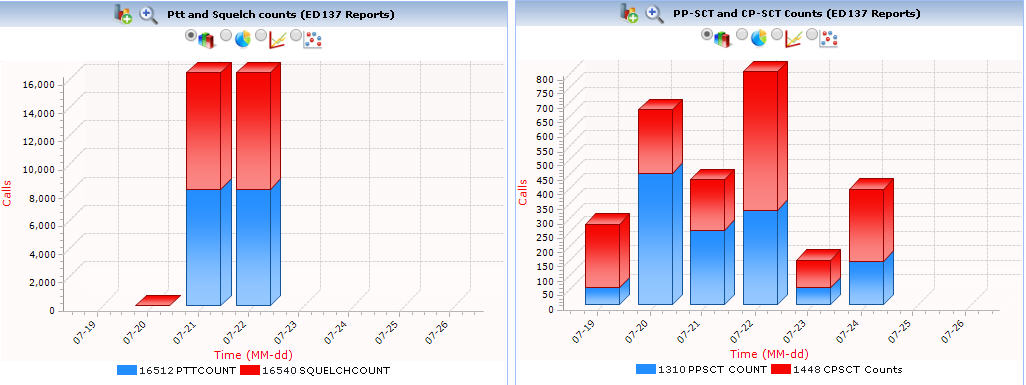Centralized Network Surveillance System
11th, Oct 2019
Welcome to another issue of GL Communications' newsletter providing information and insight into our high-density web-based network monitoring and surveillance system (NetSurveyorWeb™) for IP, Wireless, and TDM Networks.

GL’s Network Surveillance System can record and playback phone calls and filter on calls of interest. The surveillance system facilitates historical storage, retrieval, querying, centralized reporting, and display of Call Detail Records (CDRs) by non-intrusively connecting to TDM/Analog, optical, or IP networks. Currently supported protocols include 5G, 4G (LTE, IMS, Diameter), 3G UMTS (IuCS, IuPS), 2G (GSM, TRAU, MAP, CAMEL), VoIP (SIP, ED-137, SIGTRAN, H.323, MEGACO, MGCP), TDM and analog systems.
Typically, the surveillance system requires TDM and IP protocol analysis probes deployed at various physical locations. These probes capture, decode, and segregate the traffic to calls and forwards the CDRs, signaling frame details, and other statistics to the centralized database server.
The central system comprises of a database engine, web server, and NetSurveyorWeb™, a web-based application, to facilitate data storage and retrieval through web browser clients. GL recently introduced NetSurveyorWeb™ Lite, an integrated and a cost-effective monitoring system, designed for a simple plug-and-play system with Web Server Database Engine, and Protocol Analyzers on a single system; it offers historical data retention up to 9 GB.
Latest Enhancements in Network Monitoring System
In this newsletter, we focus on recent enhancements -
Monitoring Air Traffic (ED137) Network
Enhanced to support Air Traffic Network (ED137) monitoring. This provides quick CDRs of air-to-ground calls and ground-to-ground calls with improved processing and response times for calculating statistics, call type including counters like PTT, Squelch, PTTs, PTT Mute, PPSCT Counts. It also provides QoS for each PPT/Squelch session..
Play Voice File
Added an audio play option with the ability to play individual left/right and merged audio sessions as per the configured play voice config details, for various codec types like EVRCC, G722, SPEEX_WB, OPUS, AMR_WB, EVS_WB and many more.
CDR for Analog Phone System
Provides CDR and Key Performance Indicators (KPI) for Voiceband measurement tests – C-Notched Noise (CNN) Test, Signal-to-Noise Ratio and Level, Voice Quality Test (VQT POLQA) and Three Tone Slope (Gain Slope).
Voice Quality and Delay Measurement Metrics
NetSurveyorWeb™ application works with Voice Band Analyzer (VBA) application to analyze monitoring voice band traffic and provide useful metrics that are of interest to the service providers - Active Speech Level, noise level, speech activity factor, power measurements, clipped samples, DC level.
It also works with Delay Measurement tools to analyze captured voice traffic and provide precise one-way delay metrics.
Other features of NetSurveyorWeb™
- Ability to support various decode standards like ANSI, ITU, ETSI, 3GPP, for all the supported protocols
- Complete CDRs
- Ability to identify and analyze CDRs using KPI’s
- Supports end-to-end multi-interface call flow
- Display real-time data signaling, traffic and Quality of Service (QoS) performance metrics
- Search & filter calls of interest
- Drill-down to calls of interest with customized filter and/or search options
- Apply single or complex filters for data analysis
- Key Performance Indicators (KPI’s)
- packet loss, gap, jitter, delay, RTP performance statistics, R-factor & MOS scores, and unparalleled voice band statistics
- Signaling Performance - Signal level, Nosie Level, and Echo
- Delay Measurements (RTD, OWD)
- Signaling Messages and Traffic Types; Successful and Unsuccessful failure causes
- Graphs and Reports generation
- Display customized reports and graphs based on SQL queries
- Graphs provided for various metrics like call completion ratio, answer call ratio, answer-seizure ratio (ASR), and call duration
- Generate reports based on alarm triggers




 Back to Newsletter Index Page
Back to Newsletter Index Page